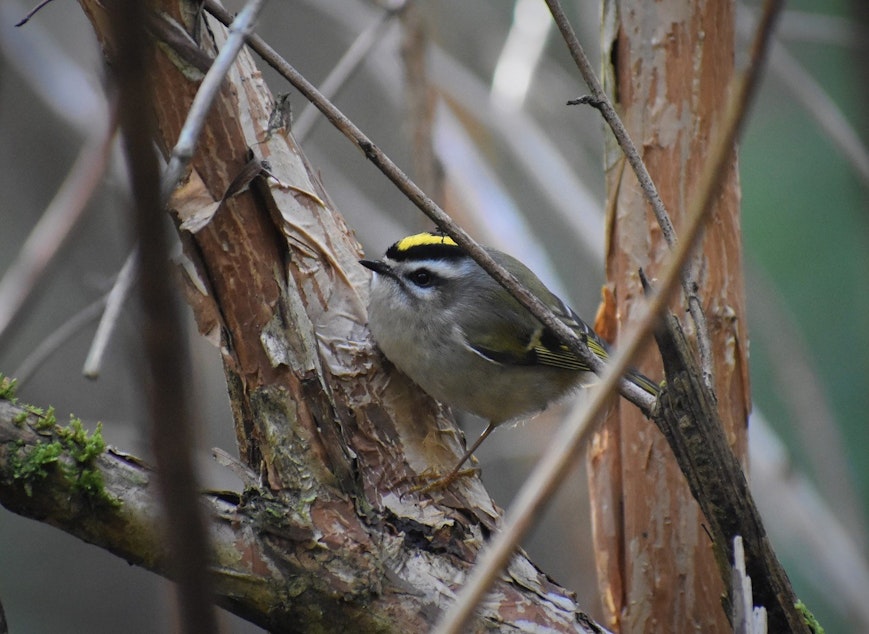Trapped at home? You can help UW study bird responses to social distancing

Is our social distancing affecting the bird life around us? The University of Washington is inviting citizen scientists to find out — and connect with nature themselves.
The stay-at-home restrictions prompted by Covid-19 are resulting in sudden changes to traffic, air pollution, and use of green spaces. Researchers with the University of Washington’s Quantitative Ecology Lab want to know whether birds will respond to these changes by living and nesting in different places.
They're asking people throughout the Northwest to sign up to document the birds they see or hear in a specific place, such as their backyards or local parks, at least once a week for 10 minutes through June 30. They said beginners are welcome; they’ll record their sightings through an app called E-Bird.
Olivia Sanderfoot, the project coordinator, said the goal is to get insights about birds, while benefiting humans as well.
“I am hopeful that this project will help us learn more about how humans directly and indirectly affect bird communities in the Pacific Northwest,” she said. “And I’m hoping that the folks who are involved can use this as an opportunity for self-care in a very challenging time.”
Before the coronavirus hit, Sanderfoot had planned to study the impact of wildfire smoke from prescribed burns on birds. Now that research is on hold.
“I figured why not take advantage of this moment and see if we can start to think about how air pollution in our cities is changing right now,” she said. “And collect observations of birds that could help us figure out how birds respond to changes in air quality.”
She said researchers know some birds are more threatened by urbanization than others. But under normal conditions, it can be hard to tease out the impact of factors like loss of habitat versus air quality.
“So what we’re hoping to do is think about how social distancing is affecting human behavior in a way that is leading to short-term environmental change that we could then zoom in on,” Sanderfoot said, and see how birds are responding.
Sponsored
She said she’s mindful of the trauma and tragedy that occasioned the public health restrictions.
“We don’t want our project to be misconstrued as something that is a positive spin on a pandemic,” she said. “Instead we’re hoping to, as ecologists, take advantage of this moment to think differently about a research question that we’ve already been considering but now have an opportunity to look at in new ways.”
But Sanderfoot said it seems like a blessing to find this way for people to connect with nature while following health guidelines.
“I was trying to figure out how we could get more people outside just a little bit each day,” she said. “Because we know that exposure to the outdoors is super-important for mental health. And right now I think a lot of us are feeling trapped.”
She said 66 people have signed up so far; most are pledging to monitor the birds they see out their windows or in their yards. Researchers hope people can monitor the same place again next spring to compare any changes without the social distancing rules.




